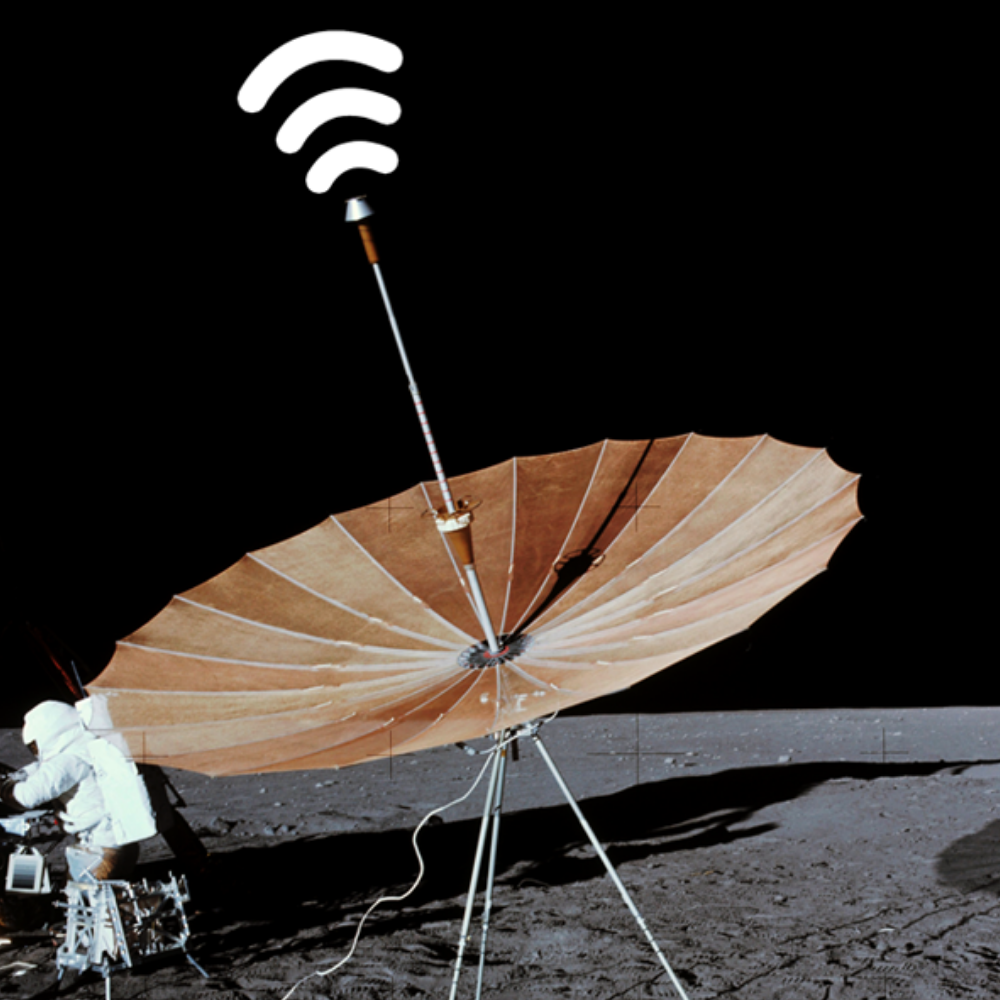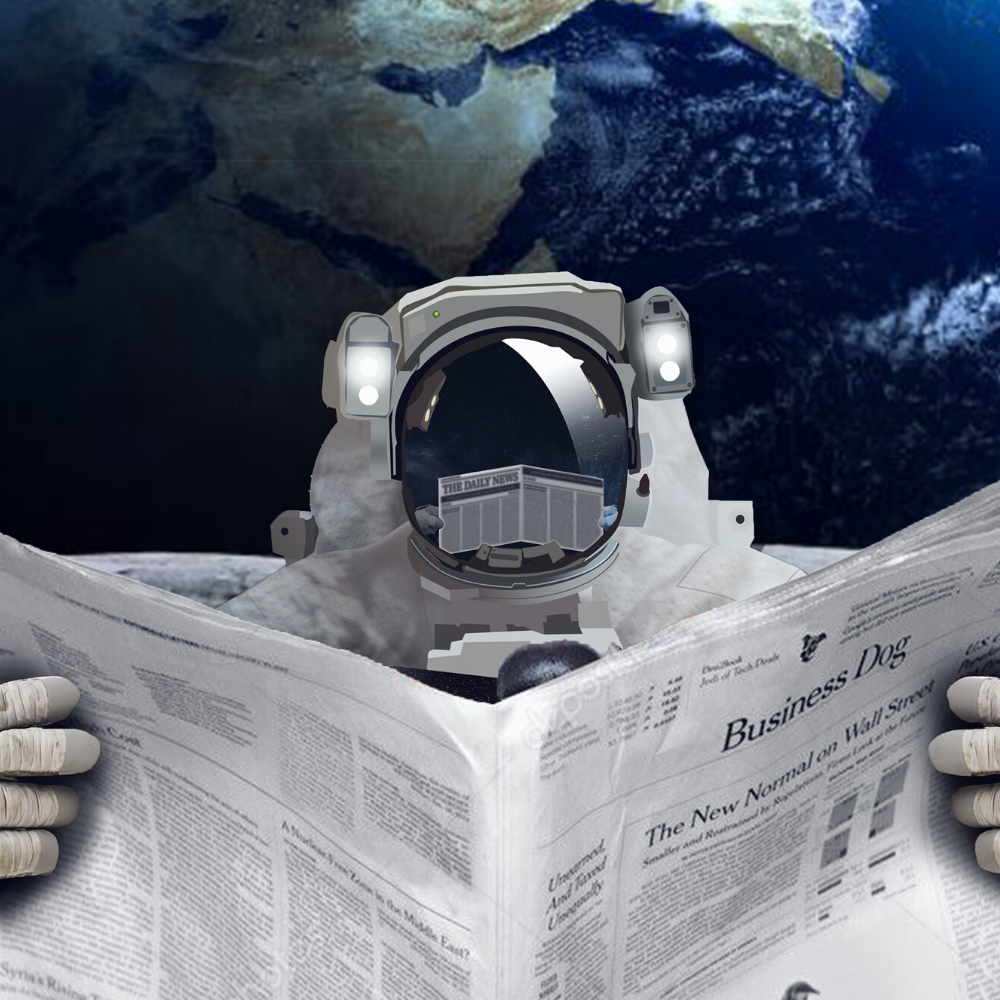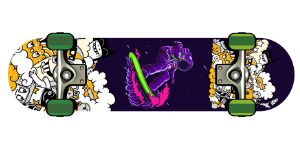MidJourney Prompt: Cinematic still, Peter Pan’s shadow, 1980s, cinematic lighting, photography style of Wes Andersen
In the beloved story of Peter Pan, the boy who wouldn't grow up had a playful shadow that mirrored his every move. Today, in the expansive realm of the internet, we're witnessing the rise of our own playful shadows - AI-powered personas that mimic human behavior so convincingly they can pass for real people in our digital Neverland. These "Counterfeit Shadows", much like Peter Pan's, are blurring the line between the real and the artificial, raising significant ethical and societal dilemmas.
In a recent Senate Judiciary Subcommittee hearing on Privacy, Technology, and the Law, Sam Altman, the head of OpenAI, found himself in the hot seat again as the issue of "Counterfeit People" was brought to the fore by New York University Professor Gary Marcus. The term, coined in a thought-provoking article in The Atlantic by Daniel C. Dennett, refers to AI-powered personas that mimic human behavior so convincingly they can pass for real people in digital environments. The article argues that these AI personas, or "Counterfeit People", pose a significant threat to society, capable of undermining trust and potentially eroding human freedom. The senators questioned Altman on the ethical implications of these AI personas and the steps OpenAI is taking to address this issue. The hearing underscored the need for stringent regulations and ethical guidelines in the development and deployment of AI technologies.
Experience the full dialogue in motion! 🎥✨ Click on the video above to dive into the complete hearing.
The Dance of the Counterfeit Shadows
Just as Peter Pan's shadow could mimic his actions, these AI personas, powered by advances in machine learning and natural language processing, can mimic human conversation and behavior with uncanny accuracy. They engage in online interactions, respond to queries, and even exhibit personality traits that make them seem incredibly lifelike.
The concept of these Counterfeit Shadows can be traced back to the "imitation game", proposed by Alan Turing, which has since evolved into the Turing Test. This test suggests that a machine could be considered intelligent if it could convince a human interlocutor that it was a person. Today, not only are AI personas passing the Turing Test, but they are also creating an industry dedicated to producing AI personas that can trick even the most skeptical individuals. Much like Peter Pan's shadow acted on its own, these personas display an unmistakable independence.
The Lost Boys of Ethics
In the face of a technology that its own creators barely understand, the response from lawmakers has arguably been more confusion than resolution.
There have been increasing calls for some flavor of regulation through government oversight. Advocates argue that such regulation is necessary to ensure this new technology is used responsibly and ethically, and to prevent potential misuse or abuse. They point to concerns about privacy, data security, and the potential for AI to perpetuate or exacerbate societal biases (referring both to the biases built into AI as well as the biases AI unwittingly cultivates in humans).
They furthermore argue that government oversight could provide a framework for accountability and transparency in the development and deployment of such technologies.
However, under the best of circumstances new technologies of any kind present complex and multifaceted issues for both lawmakers and society at large. In this case, we shouldn't delude ourselves into thinking we fully understand how to approach it, as this is anything but normal.
What Makes This Neverland Unique?
Many things make this situation unique in history, but perhaps most troubling is the increasing likelihood these systems will influence lawmakers themselves given enough time. We've already seen this take place in pockets, as lawyers misuse it for cases, and lawmakers use it for speeches. This is only the beginning. There is a profound new question we must begin to ask ourselves, one we've never truly encountered before. How can we impose regulations on a system that is concurrently imposing its own regulations on us?
Even if it's not a conscious sort of regulation imposed on regulators, the medium is the message. The architecture of the technology being used frames the narrative, either directly through intent or passively through its design.
Just as Peter Pan's shadow was a playful yet elusive replica of himself, we stand on the brink of a new era where lawmakers might harness the power of Large Language Models to craft digital twins. These AI-driven doppelgängers, much like Pan's mischievous shadow, could mimic their creators, amplifying their voices and extending their reach. While the ancient city of Rome faced its decline from internal forces, today's digital realm presents a paradox. The very guardians we trust to shield us from the deceptive dance of these digital shadows might soon be leading the waltz, embracing their AI counterparts to further their agendas. The line between the real and the replicated, much like the line between Peter and his shadow, may soon blur in intriguing and unexpected ways.
Sound unbelievable? Buckle your seat belts...
Echoes of Neverland: Enter the PLM
We stand on the cusp of the Personal Intelligence Era, where we're introduced to our own digital shadows: Personal Language Models (PLMs).
Developed by pioneers like Personal.ai, PLMs are not mere reflections but are imbued with a deeper understanding. They're designed to resonate with the individual's voice, experiences, and nuances, much like how Peter's shadow was uniquely his, capturing his essence and spirit (albeit the mischievous side). While Large Language Models (LLMs) offer a broad spectrum of knowledge, akin to an all-knowing entity, PLMs are more intimate, echoing our personal tales and adventures.
The dance between Peter and his shadow is reminiscent of the relationship between individuals and their PLMs. Just as Peter sometimes chased his shadow, trying to stitch it back, we too might find ourselves in a playful tug of war with our digital counterparts. They're there to complement us, to make our online engagements richer and more authentic, yet they retain a hint of their own digital mischief, always reminding us of their origins in the vast world of AI.
While LLMs serve as vast reservoirs of knowledge, PLMs, much like Peter's shadow, bring forth our unique stories and experiences. They're our personal companions in the digital realm, capturing our individual adventures, much like how Peter's shadow flitted about, capturing his spirited escapades in Neverland.
As we navigate the vast digital seas, our PLMs, our very own "Counterfeit Shadows," are set to become our constant companions, echoing our voices, values, and visions. And just as Peter Pan's tales are incomplete without the antics of his shadow, our digital journey might soon be enriched by the playful dance of our personal AI shadows.
When Shadows Become Familiar Strangers...
These models are not just generic AI constructs; they are tailored reflections of individual users, grounded in their unique data, memories, facts, and opinions. Imagine having a digital assistant that truly understands your preferences, experiences, and viewpoints, and can articulate them just as you would.
One of the most intriguing aspects of PLMs is the concept of "Memory Stacks." These are digital repositories that the PLM trains on, capturing the essence of an individual's experiences. Unlike the vast public datasets that Large Language Models (LLMs) train on, PLMs focus on a Memory Stack that is uniquely curated for each user. This Memory Stack is made up of "Memory Blocks," smaller data chunks that can encompass various details, from dates and sources to specific texts. The power lies in the user's control over these Memory Blocks, allowing them to add, delete, or edit as they see fit.
In day-to-day online life, the applications of PLMs are vast:
- Crafting Unwanted Epistles: Even when the words weigh heavy and the motivation wanes, let your PLM be the scribe, penning those emails you'd rather avoid, but with the grace and tact only you could muster.
- Whispers in Digital Bites: In the rapid-fire realm of SMS, your PLM becomes the poet, ensuring every text, every byte, carries the depth of a conversation and the lightness of a fleeting thought.
- Navigating the Financial Seas: As the stock market waves rise and fall, let your PLM be the seasoned sailor, guiding your vessel through the tumultuous tides, seeking the shores of prosperity.
- A Pantry Prophet: Before you even realize you're out of milk or craving exotic spices, your PLM, with its intuitive foresight, fills your cart and orchestrates a grocery ballet, ensuring your kitchen is always a haven of flavors.
- Weekend Wanderlust Curator: When Friday dawns and the promise of leisure beckons, your PLM crafts a tapestry of weekend escapades, from serene sunrises to exhilarating adventures, tailored to your whims and fancies.
- The Digital Artisan: In the vast workshop of the web, let your PLM be the master craftsman, sculpting, molding, and generating online documents that resonate with precision and creativity.
You get the idea. The possibilities are forever beyond the horizon.
The synergy between PLMs and LLMs is also noteworthy. While LLMs serve as vast reservoirs of general knowledge, akin to encyclopedias, PLMs act like personal diaries, capturing individual insights. For instance, while an LLM might provide general information about a city like Barcelona, a PLM would recall your unique experiences from a recent trip there.
The kicker is, lawmakers will be forced to use them to maintain their competitive edge. Here are just a few possible use cases:
-
Orchestrating Digital Decrees: When the quill feels heavy and parchment vast, the PLM will become the bard, drafting laws and bills with the eloquence and wisdom of ages past. It's already happening with LLMs - PLMs are just the logical next step.
-
Echoes in the Halls of Debate: In the fervent arena of political discourse, the PLM stands as the orator, echoing the lawmaker's voice, ensuring every argument is sharp, every retort is swift.
-
Navigating the Policy Labyrinth: As the intricate maze of governance unfolds, the PLM becomes the seasoned guide, charting paths through policy jungles, always aligned with the lawmaker's vision and the people's pulse.
-
The Digital Diplomat: In the dance of international relations, the PLM emerges as the envoy, crafting messages and communiqués that resonate with diplomacy and tact, bridging worlds and mending fences.
-
Constituent's Compass: Before a letter is penned or a call is made, the PLM, with its intuitive ear, anticipates the needs and concerns of the people, ensuring the lawmaker is always in tune with the heartbeat of their constituency.
-
Campaign Maestro: As election seasons whirl in their frenzied tempests, the PLM crafts a symphony of promises and visions, orchestrating campaigns that resonate with hope and every voter's dream.
-
Guardian of the Digital Realm: In the ever-evolving landscape of cyber governance, the PLM stands sentinel, ensuring laws are crafted with foresight, protecting realms both tangible and virtual.
-
Historian and Futurist: With a foot in the annals of history and an eye on the horizons of tomorrow, the PLM aids lawmakers in crafting legislation that honors the past while paving the way for a brighter future.
In the grand theater of governance, Personal Language Models promise to be the silent partners of lawmakers, amplifying their voices, refining their visions, and ensuring the dance of democracy remains as vibrant as ever.
And this should scare the absolute shit out of you. As was stated in the thesis above, when it comes to a technology that's integral to day-to-day business for everyone, how can lawmakers be expected to in any rational way regulate the very technology they're using in their regulatory efforts.
Where AI is concerned, the future turns all status quos into Zen Koans - what is the sound of a hammer hammering itself?
This Shadow Is Bigger Than That Shadow
While concerns about the influence of social media on lawmakers were once paramount, they now seem almost quaint in the face of the challenges posed by AI. Social media platforms, with their viral movements like #BlackLivesMatter and #MeToo, provided lawmakers with a direct line to public sentiment, allowing them to adjust their positions based on real-time feedback. Trending topics and personal narratives further highlighted shifts in public opinion. Yet, as significant as these influences were, they pale in comparison to the disruptions AI is bringing to the legislative process. The rapid advancements in AI technology, with its potential for misinformation and manipulation, are outpacing the challenges once attributed to social media, raising new concerns about the integrity of due process in lawmaking.
As AI becomes an integral part of our daily lives, its influence extends to every facet of our activities, including our three branches of government. The advanced capabilities of neural networks, while offering invaluable insights, operate on a complexity that often surpasses human understanding. Despite this, the allure of AI's efficiency and precision ensures its continued adoption in various sectors. For the Senate, Congress, and Judiciary realms, this means leveraging AI's powerful recommendations, even when the underlying logic remains elusive. Embracing AI's potential while navigating its intricacies is the new norm, underscoring the need for comprehensive oversight and a deeper understanding of its mechanisms.
Lost Boys' Rivalry
To muddy up the waters, there are perverse incentives for existing technology companies (such as OpenAI and Google) to limit the amount of competition in the space. In a recently leaked memo from Google, titled "We Have No Moat", it was made abundantly clear that this technology was just as dangerous for the bottom line of the companies that wielded it as it was for humanity in general. In short, LLMs for profit are a race to the bottom. Not only is artificial intelligence a deflationary technology, but it also seems to be one that levels the playing field. There are so many open source LLMs at this point that it's going to be a wonder why anyone would actually pay for the service in the future.
It would seem, as crazy as it sounds in the moment, that we're fast entering an era of post-Google-dominance. But OpenAI, if we're to take the words of the authors on that leaked Google memo seriously, is in the same predicament. Living by the sword that kills Google's search engine also means dying by the same sword much more swiftly. It's not as if there is a single LLM platform vying for people's attention. Sam Altman knows this, which is likely also why he wants regulation.
This sort of "frienemy" posturing is problematic at best, as although most people in the space can agree that regulation is pertinent for this budding technology, it also needs to be balanced with the potential to stifle competition. This may sound like some sort of traditional capitalist rhetoric from a robber baron, but the reality is healthy competition keeps monopolies at bay. Google basically owns Search Engine dominance, and neither OpenAI, nor their Microsoft overlords, likes this. Bing, as strange as it sounds, has made a comeback since incorporating chatGPT into their search engine.
Which in turn prompted Google to release their Bard...and so on, and so forth... Which is why Google wants just as much regulation as Sam Altman. Better the devil you know.
But threaten their own bottom line, and they no longer seem to care about regulation. Recently Sam Altman went so far as to threaten the removal of his company's product from Europe (a threat he soon after recanted).
Although we'd like to think there can be a governing collective body of human individuals, free from the influence of a technology they are either employed to keep running (in the case of Sam Altman) or put in charge of regulating (in the case of this oversight committee), we have ventured deep fearfully deep into Neverland territory. Without realizing it, the changes are coming at us both individually and societally faster than we can adjust to them. By the time the governing bodies responsible for mitigating any negative affects of such technologies come around to actually understanding them, it will most likely be because they're already using them in their day-to-day lives.
Despite these concerns, the rise of Counterfeit Shadows is indicative of a broader trend towards the increasing integration of AI into our daily lives. As AI continues to evolve, it is probable that the distinction between human beings and AI personas will become increasingly blurred, much like the line between Peter Pan and his shadow.
In the intricate web of tomorrow, one might wonder if there's truly a place for digital doppelgängers. You may feel steadfast, believing the dance with a digital twin isn't your tune. But as the boundaries of technology stretch and twist, even the staunchest skeptics might find themselves intrigued by the whisper of AI personas. After all, isn't evolution the essence of humanity? Tomorrow's tale might just surprise you, with a chapter where your skepticism meets its digital echo. Will you turn the page, or close the book and walk away?

















